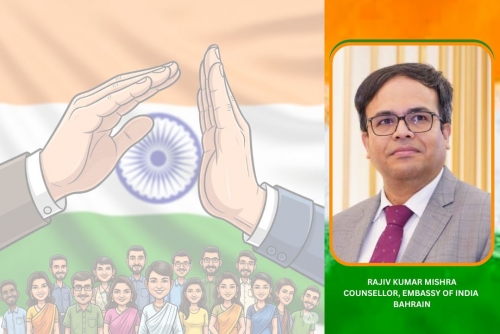India's Remarkable Strides in Social Protection: A Global Benchmark
India's journey in expanding its social protection safety net stands as a testament to its commitment to inclusive growth and welfare. From covering just 24.4% of its population in 2019, India has rapidly escalated its social security reach to an impressive 64.3% by 2025. This makes it one of the fastest global expansions in social protection, a monumental achievement now duly recognized and reflected in the International Labour Organisation’s (ILO) ILOSTAT database. This expanded coverage now benefits over 940 million people, a result of strategic central schemes and innovative, targeted state-level programs, particularly those focused on women and pensioners.
The ILO’s World Social Protection Report (WSPR) 2024-26 provides further insights into India's success. The Targeted Public Distribution System (TPDS) is highlighted as one of the world’s largest in-kind social assistance programs, legally guaranteeing food security for nearly 800 million individuals. This underscores TPDS's central role in India's broader social protection framework, ensuring essential food supplies reach a vast segment of the population.
Beyond mere food distribution, the report also acknowledges the program's proactive efforts to combat micro-nutrient deficiencies through initiatives like the distribution of fortified rice and the integration of millets into the public food system. A notable finding from the WSPR 2024-26 is that young employed women under 30, including those in self-employment, benefit from higher levels of social security coverage compared to their male counterparts in India. Furthermore, India stands out as one of the few nations providing universal, tax-financed maternity benefits, a significant stride in maternity protection.
India's robust social protection system is a culmination of various impactful welfare programs designed to provide financial security, healthcare, and food assistance. These initiatives have been instrumental in enhancing livelihoods and alleviating poverty nationwide. Some of the cornerstone schemes include:
Ayushman Bharat: As of March 26, 2025, the Pradhan Mantri Jan Arogya Yojana (AB-PMJAY) has issued nearly 400 million Ayushman Cards, offering free health coverage of up to 0.5 million per family across 24,810 empaneled hospitals.
Pradhan Mantri Garib Kalyan Anna Yojana (PMGKAY): This vital scheme, launched during the COVID-19 pandemic, provides free food grains to vulnerable populations. By December 2024, it reached over 806 million beneficiaries, nearing its ambitious target.
eShram Portal: Launched on August 26, 2021, this portal has created a National Database of Unorganised Workers (NDUW), providing a Universal Account Number (UAN) for enhanced social security. By March 3, 2025, over 306 million unorganised workers had registered, with women constituting 53.68% of them.
Atal Pension Yojana (APY): Launched in 2015, APY aims for universal social security, especially for the poor and unorganised sector workers. Alongside PMJJBY and PMSBY, it has significantly strengthened the pension system, with 72.5 million beneficiaries enrolled by December 31, 2024, accumulating a corpus of over 433 billion.
Poverty Reduction: The past decade has seen a remarkable achievement: 248 million people have escaped multi-dimensional poverty, underscoring the profound impact of these comprehensive social security measures.
To further refine its understanding of social security coverage, the Ministry of Labour & Employment launched Phase 01 of India’s Social Protection Data Pooling Exercise on March 19, 2025. This ambitious initiative seeks to consolidate data from various schemes, offering a holistic view of India's welfare landscape. The initial phase includes ten key states: Uttar Pradesh, Rajasthan, Maharashtra, Madhya Pradesh, Tamil Nadu, Odisha, Andhra Pradesh, Telangana, Karnataka, and Gujarat.
Building on these efforts, India has already processed over 2 billion records using encrypted Aadhaar as a unique identifier across 34 major central schemes, including Mahatma Gandhi National Rural Employment Guarantee Act (MGNREGA), Employees' Provident Fund Organisation (EPFO), Employees' State Insurance Corporation (ESIC), Atal Pension Yojana (APY), and Pradhan Mantri Poshan Shakti Nirman (PM POSHAN). The Indian government's proactive engagement with the ILO, including recent bilateral discussions in Geneva, aims to ensure these extensive welfare measures are accurately reflected in future global assessments. The ILO has acknowledged housing and food security as part of the broader United Nations Sustainable Development Goals and has agreed to consider such schemes in its evaluations.
With continued strong collaboration between the Centre, State Governments, and the ILO, India is poised to further refine its social protection framework and present an even more accurate picture of its welfare reach to the world. As a nation, India also shares strong bilateral ties with Bahrain, and these achievements will undoubtedly open more avenues for cooperation between our two countries.
(The views and opinions expressed in this article are those of the author and do not necessarily reflect the official policy or position of the Daily Tribune)
Related Posts

